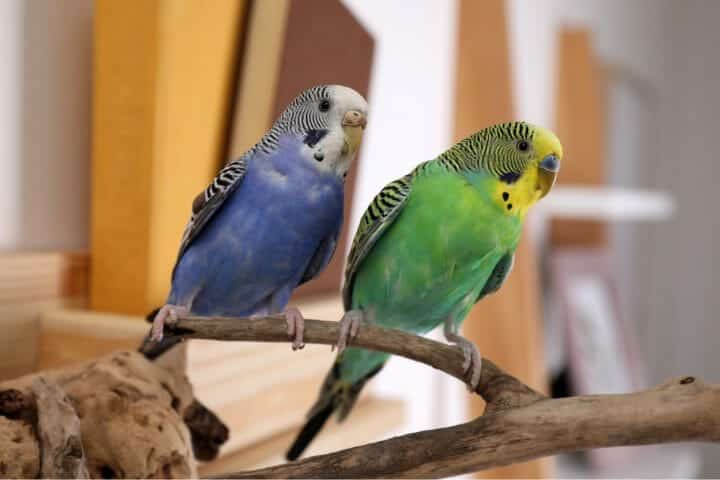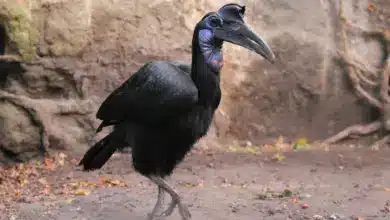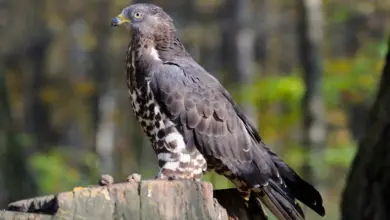Are Sandhill Cranes Aggressive?
Like many other birds across the animal kingdom, Sandhill cranes won’t become aggressive unless they are presented with an immediate threat such as predators approaching their nest or another animal attacking their mate.
Often birds such as ravens, crows, eagles, and some owls try to attack their nests in order to eat their eggs which understandably makes the Sandhill parents protective and aggressive.
Becoming aggressive as a form of protection and a means of survival aren’t the only reasons. It is acknowledged that aggression is a key social behavior across crane populations and flocks and can tell us a lot about the species and how they interact.
But what else makes these cranes aggressive?
How Do Sandhill Cranes Display Their Aggression?
When being hunted by other birds in an aerial attack, the cranes are known to jump around and kick out their long legs in order to disrupt the other bird’s view of their nest or young.
This also makes the cranes look even bigger and more of a risk to the other birds that are smaller in size to them such as a raven or crow.
If the cranes are being disturbed by ground predators then the birds will spread their wings and hiss standing still by their nest in an attempt to intimidate the predator.
If the predator gets too close then the crane will use their sword-shaped beak and chase after the predator kicking them as they go.
Are They Aggressive to Each Other?
Aggressive displays between Sandhill cranes are said to be vital components of many social interactions. Such interactions may be shown by aggressive behaviors such as antiphonal calling, subtle postures, and dramatic kicking and flight chasing.
It is also suggested that aggressive interaction between males and females is a crucial aspect of potential mate and pair bond initiation.
Aggressive posturing and movements have been observed by females in order to attract the attention of a potential mate.
In a survey consisting of 930 observed aggressive encounters, males Sandhill cranes were recorded to initiate 63.7% of them where their aggression was displayed towards other paired males. This is said to occur to impress other females looking for a mate.
Due to their higher levels of aggression, males are said to be the primary defender of the pair and their territory while the females are the dispersers.
It has also been concluded that aggressive behaviours displayed by sandhills occur so other cranes are able to identify the sex and social status of each particular bird within a flock further highlighting the social importance of aggression in this species.
Paired birds were also found to display aggressive behaviors towards other paired birds in an attempt to be acknowledged as the strongest pair or to obtain a better nesting site and surrounding food sources.
Are They Aggressive to Humans?
Weighing up to 12 pounds with a dagger-like beak, it’s understandable why humans have become afraid of Sandhill cranes if they are spotted around their neighborhood.
The issue is, that some Sandhill crane species have begun nesting within urban and sub-urban areas and will of course come across humans and become used to them. However, instead of being wary of them and shying away from humans, some cranes have become aggressive.
Some people enjoy the Sandhills living nearby and have begun feeding them. This reliance on getting food from humans subsequently made cranes aggressive, snatching and pecking food from people’s backyards.
Of course, if humans are to get too close to Sandhill’s nests especially while they are incubating and hatching the parent cranes will understandably become aggressive in order to protect their offspring.
Why Do Sandhill’s Peck Aggressively at Cars?
During and outside of bug season, Sandhill cranes within urban and suburban areas are known to be attracted to people’s cars and violently peck at them to eat the squashed bugs on them.
Not only nutritional but this is an easy snack for the cranes that they must not become reliant on as they will appear in urban areas too much and lose their natural behaviours in green and wetland spaces. They also run the risk of being run over as they have slow reaction times and are not road-savvy.
Another reason for Sandhill’s aggression on cars is the fact they can recognise their reflection in the mirrors of the vehicle. They must assume that their reflection is another crane and automatically exhibit aggressive behaviours towards them.
Conclusion:
Aggression is evidently a dominant behaviour Sandhill cranes display across a variety of occasions.
Displayed in order to protect their young from aerial and ground attacks, Sandhill’s will use their large body and wing span to deter predators away from their brood.
But, they also display different forms of vocal, physical, and postural aggression every day towards other members of their flock or during courting. Males, in particular, utilise their aggressive behaviours in order to attract females and reproduce.
Sadly, their aggression is now becoming more common in urban areas when they come into contact with human populations.
This is why we must remain a safe distance away and educate populations not to feed or touch the birds for their own safety and their own survival.





